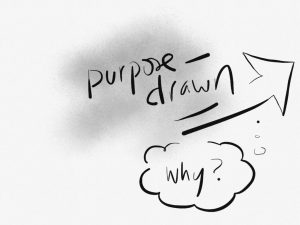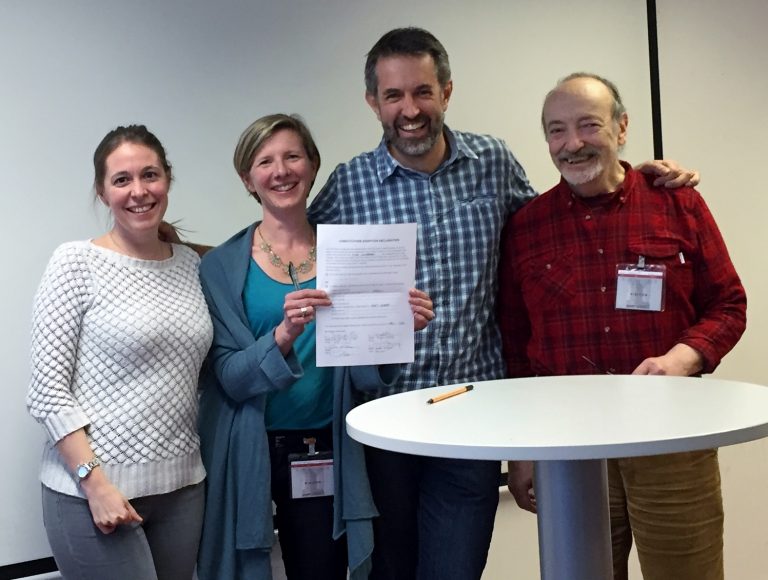How to get agile without losing participation? Our latest experiment
Two-and-a-half years ago, the whole team at Future Considerations took a week out to reconsider our future. By common agreement, we had begun to drift away from our highest purpose and deepest values. While still doing cutting-edge, on-purpose work with our clients, we were slowly fraying at the core. We felt a strong need to take our own medicine, and to build our own dream culture. Like many of our clients, we have some incredibly bright and inspiring people – but felt we were failing to get as much out of them as we might.
Our experiment in organisational design that has followed has been a thrilling journey for us all. We have pushed the envelope on new structures and practices in the effort to maximise contribution, make the best decisions and enhance learning. This change in culture led to us being named one of the world’s most democratic workplaces by WorldBlu. And doing this for ourselves has helped us bring fresh insights to clients.
Our new constitution embraced some of the more radical approaches to organisational democracy. Since that week in March 2009, we hold annual elections where our “Company Circle” (the fellows and salaried staff of Future Considerations) elect Leadership Team and Managing Director for the following year. The Company Circle, rather than a Board, is now our highest decision-making body. We have negotiated to buy back founding shares so that the business can be owned by all of our members – learning from companies like Arup and John Lewis who do the same. This inclusive philosophy has been brilliant for enhancing engagement and, I believe, making wiser decisions than the traditional top-down model usually affords.
But, as anyone who has tried this approach will discover, it presents challenges. If “everyone” is the highest decision-making group, how can you be agile on big decisions? How do you ensure clear accountability, quick execution, high quality and good governance? Sure, we still had a Leadership Team and clear accountabilities – particularly on client projects and business development – but there was a gap in our design, which needed to be plugged.
And so, our latest piece of internal design is aimed to address these needs, without losing any of our gains. We have drawn heavily on the principles of sociocracy and its cousin holacracy – radical approaches to organisational theory designed to tap into the energy unleashed through self-organisation. Right now, we are focusing on the following principles:
:: Circle working. In addition to the LT and the Company Circle, we have set up four “operational circles”, which serve differing functions of the organisation from marketing and business development through finance & HR and client delivery. The scope, aim and action plan is agreed with the Leadership Team. Then they’re free to self-organise, make decisions and rapidly execute to achieve these aims. The principle is that decisions and actions are delegated to the lowest possible level.
:: Double-linking. This is new for us, and is one of the more distinctive elements of sociocracy. It is built on the insight that leaders need intelligence and insights from the people “on the ground” (one of the reasons our clients invest so much in their global people surveys). Double-linking hardwires this two-way flow of views into the organisation. Each of the operational circles has a “lead link” or leader (currently an LT member) and a “rep link” – a representative chosen by that circle to represent its interests “upwards”. So now, in addition to our 3-person Leadership Team, we have a seven-person “LT+” comprising the rep-links of the four operational circles, along with the LT. This LT+ operates like a board, holding the LT to account, steering the business at a strategic level, and taking key decisions. This structure frees the Company Circle to act more like a shareholder meeting.
:: Decision-making by consent. This is different to decision-making by consensus, where everyone has to agree. In decision-making by consent, anyone can make a proposal, which others will clarify and discuss. Then, unless there is a strong objection – something that someone feels will stand in the way of living our purpose and achieving our goals – then the decision is passed. Allied to this, any decision can be revisited at any time. These principles both speed up decision-making, and will make us more agile. They should help people to feel more empowered to make a difference and to innovate. Where appropriate, they free us to be more “ready-fire-aim” than “ready-aim-fire” – a speed often needed in today’s complex world and the current economy, where dynamic steering is vital.
Our design and culture continues to be a work-in-progress. I don’t believe there’s one ideal organisational design. Rather, we need to stay responsive to what we sense in the external environment and our internal assessments of FC. But by constantly striving to be at our best – and sharing our journey – we hope we can help our clients explore ways to designing and leading their own teams and organisations which will help them increase their positive impact in the world and their bottom-line results.
Questions to reconsider:
- How are you gathering intelligence from your team members or employees, which might guide better decision-making?
- How would you rate your team’s level of engagement? What tweaks to your ways of working would enhance this?
- How agile are you? Can you quickly take tough decisions? Can you “steer the ship” in response to market or economic changes?
Many of our clients are going through restructuring, downsizing and merging. These are always times of great change. The ongoing responsiveness to external and internal needs of the business is vital if it is going to succeed. If you are in the process of restructuring or planning to do so then please feel free to contact Mark and start a conversation relating to your context.



